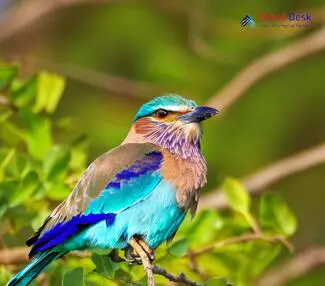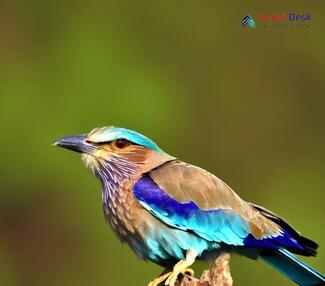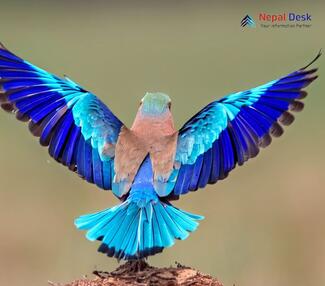The Indian Roller (Coracias benghalensis), a stunning and vibrant bird species, is truly a sight to behold. This majestic bird is widely known for its captivating beauty and distinctive dwelling habits. In this article, we'll dive into the enthralling world of the Indian Roller, exploring its unique characteristics and shedding light on its presence within the picturesque landscapes of Nepal.
Discovering Coracias Benghalensis
The Indian Roller belongs to the roller family of birds, recognized for its strikingly colorful plumage that features various hues of blue and brown. Measuring about 26-27 centimeters in length, this medium-sized bird boasts a strong beak, a large head, and powerful wings. When in flight, it emanates an array of dazzling colors as sunlight reflects off its wings, creating an impressive visual spectacle for avid birdwatchers.
Familiarizing with the Habitat
Coracias benghalensis largely inhabits open grasslands, light deciduous forests, cultivated areas, and even urban parks and gardens across Asia. This adaptable bird species holds a particularly significant presence within Nepal’s biodiverse Chitwan National Park – an ideal location to observe this magnificent creature thriving in its natural habitat. In addition to Nepal, the Indian Roller can be found in countries like India, Bangladesh, Sri Lanka, Myanmar, and Pakistan.
Characteristics and Behavior
The Indian Roller is celebrated for its exceptional aerial acrobatics during the breeding season. These swift sky-dancers effortlessly execute dives, swoops, and rolls with remarkable precision – hence their moniker “roller.” They feed primarily on insects such as beetles, grasshoppers, and moths, but are also known to consume small vertebrates like amphibians and reptiles.
Nesting habits of this bird species involve selecting a cavity, either on a tree or in man-made structures like walls and wells. They lay 3-5 white or lilac-colored eggs, which both male and female Indian Rollers take turns incubating for approximately 17-20 days. Once hatched, the chicks remain in the nest under the vigilant care of their parents until they fully fledge.
Significance of the Indian Roller in Nepal
In Nepal, the Indian Roller is revered for more than just its aesthetic charm – it is believed to be a symbol of good fortune and prosperity. The Nepalese tradition holds that catching a glimpse of this dazzling bird during important events such as Dashain – the country's most significant Hindu festival – can bring luck and blessings to the observer.
In Conclusion: A Gift from Nature
The Indian Roller (Coracias benghalensis) remains an incredible testament to the beauty and diversity of our planet's avian life. Its awe-inspiring presence within Nepal’s lush landscapes beckons nature enthusiasts far and wide, who yearn to witness firsthand this breathtaking gift from Mother Nature herself.




